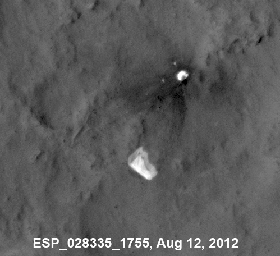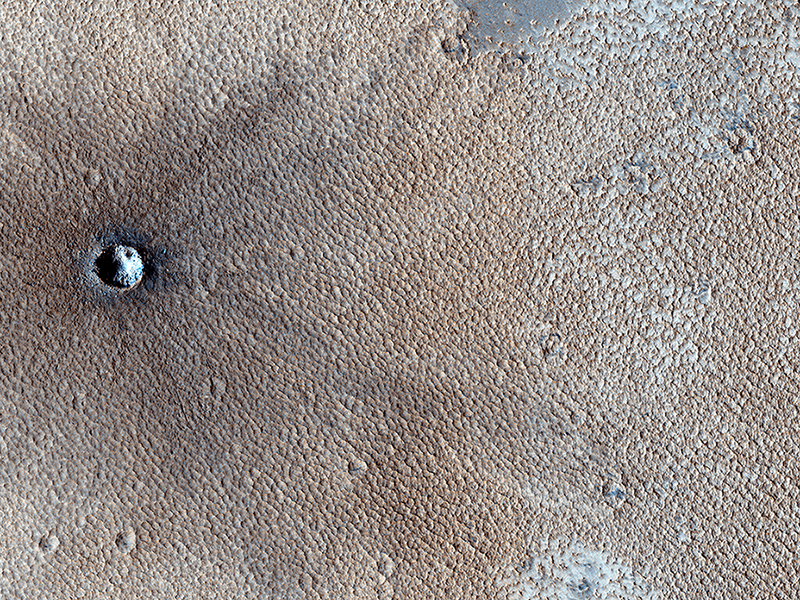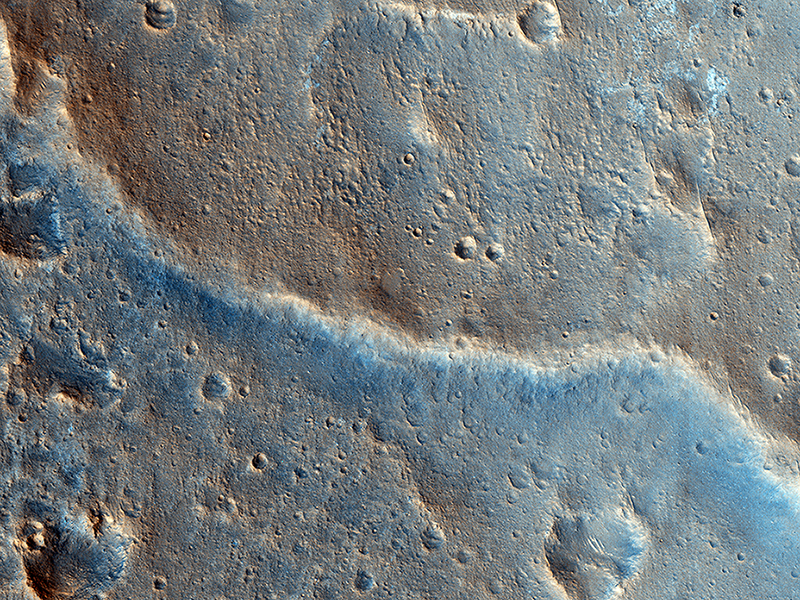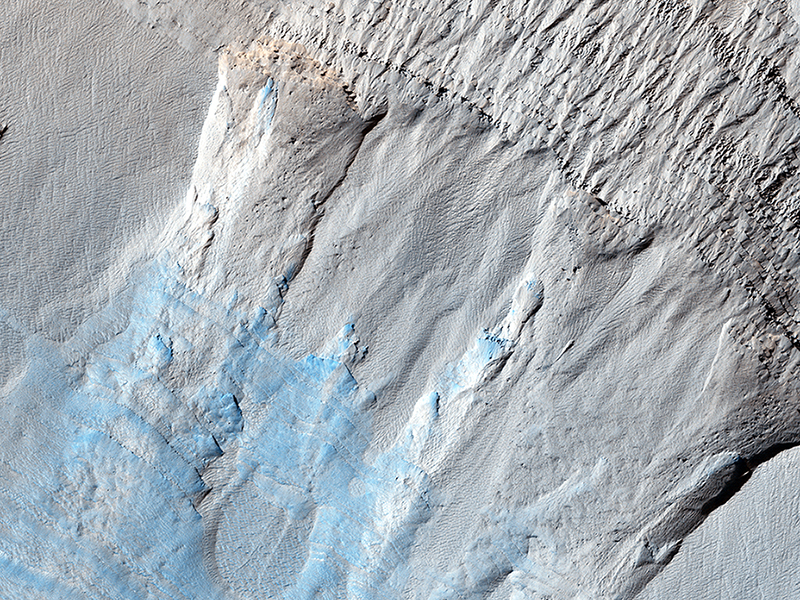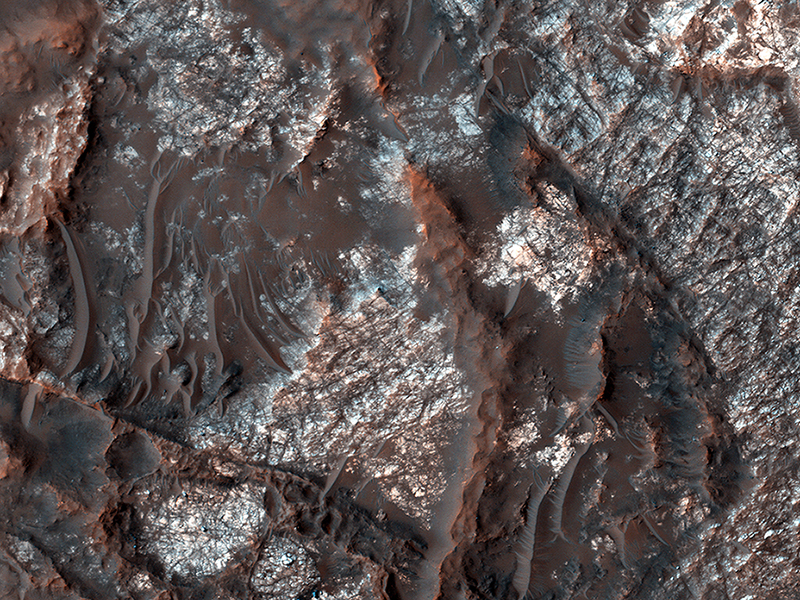Page 1 of 1
HiRISE Updates (2013 Apr 03)
Posted: Wed Apr 03, 2013 6:46 pm
by bystander
HiRISE Updates (2013 Apr 03)
Posted: Wed Apr 03, 2013 8:20 pm
by bystander
HiRISE Science Team wrote:Dark Rays and Light-Tones (ESP_012560_1660) (video)
This image shows a relatively youthful crater with dark rayed ejecta and a light-toned zone that extends beyond that ejecta.
The lighter-toned surface might be the "blast zone" as darker regolith material was " blown away" during the impact event. With HiRISE resolution, we can see that this is the wrong explanation. Instead, the bright ejecta consists of indurated fine materials, such as dust trapped by the roughened surface, then cemented over time.
Alfred McEwen wrote:Sinuous Ridge in Gale Crater (ESP_030814_1750) (video)
These two images were acquired with different look angles to make a stereo pair. Use your red-blue glasses to
view the stereo anaglyph.
This scene covers a region of the floor of Gale Crater to the east of where Curiosity landed, providing regional geologic context to understand the broader-scale geologic history. The sinuous ridges towards the bottom (south) end of the images are of special interest, as these may be former river channels.
The relief is inverted because gravels or alteration made the floor of the channel more resistant to erosion.
A closeup image shows a part of this ridge at full resolution.
This is a stereo pair with
ESP_030748_1750.
Alfred McEwen wrote:Erosion of Steep Scarp of the South Polar Layered Deposits (ESP_031078_1080) (video)
This image shows spectacular erosion of a steep scarp in the icy layered deposits on the South Pole of Mars.
There are small and large alcoves, one of which (on the right) leads to a bright deposit. This must be a recent avalanche deposit, because the ice should sublimate rapidly after being exposed from beneath the protective cover of dust that develops on the surface.
The alcoves may form by a combination of sublimation and collapse. HiRISE is monitoring this site and adjacent areas for changes, to better understand the active processes.
This is a stereo pair with
ESP_030854_1080.
Alfred McEwen wrote:Colorful Bedrock on the Floor of an Impact Crater (ESP_031099_1355) (video)
HiRISE acquires many images of bedrock exposures inside impact craters, because deep bedrock may be exposed in the central uplift, or new deposits may form on the floor.
The subimage shows an enhanced-color section of the crater floor of one crater. There are layers of rock with different colors (from different minerals) exposed in places where the dark reddish wind-blown drifts have been removed.
Credit: NASA/JPL/University of Arizona
<< Previous HiRISE Update
Re: HiRISE Updates (2013 Apr 03)
Posted: Wed Apr 03, 2013 8:45 pm
by owlice
These should come with a warning label!
Re: HiRISE Updates (2013 Apr 03)
Posted: Wed Apr 03, 2013 10:48 pm
by Beyond
haha, You sure get a rise out of HiRISE, owlice.
Re: HiRISE Updates (2013 Apr 03)
Posted: Thu Apr 04, 2013 9:05 am
by owlice
I find many of these images really beautiful!
Re: HiRISE Updates (2013 Apr 03)
Posted: Thu Apr 04, 2013 11:21 am
by Beyond
Yeah, there's some really good lookin' ones, but i have a hard time on a lot of them, telling what parts are the highest, and what parts are the lowest. The view from above, from an unknown place, tends to befuddle me. And what's worse, is that sometimes the ol' noggin sees the same picture reversed for what is high and what is low.
